Cimetério de Prazeres. Cemetery of Pleasures.
An intriguing name, no? And an intriguing sequence in this blog to be writing about a cemetery called Pleasures immediately after writing about the birth of fado in Lisbon’s taverns and brothels. Sadly, the timing is mere coincidence and the source of the cemetery’s name is direct and prosaic.
You might recall that I wrote about the political organization of Portugal having 18 districts that are further divided into municipalities. Without wanting to become tangled up in BUreaucracy, I omitted the fact that large municipalities are further divided into civil parishes. Lisbon, as of the date of this post, has 24 civil parishes.
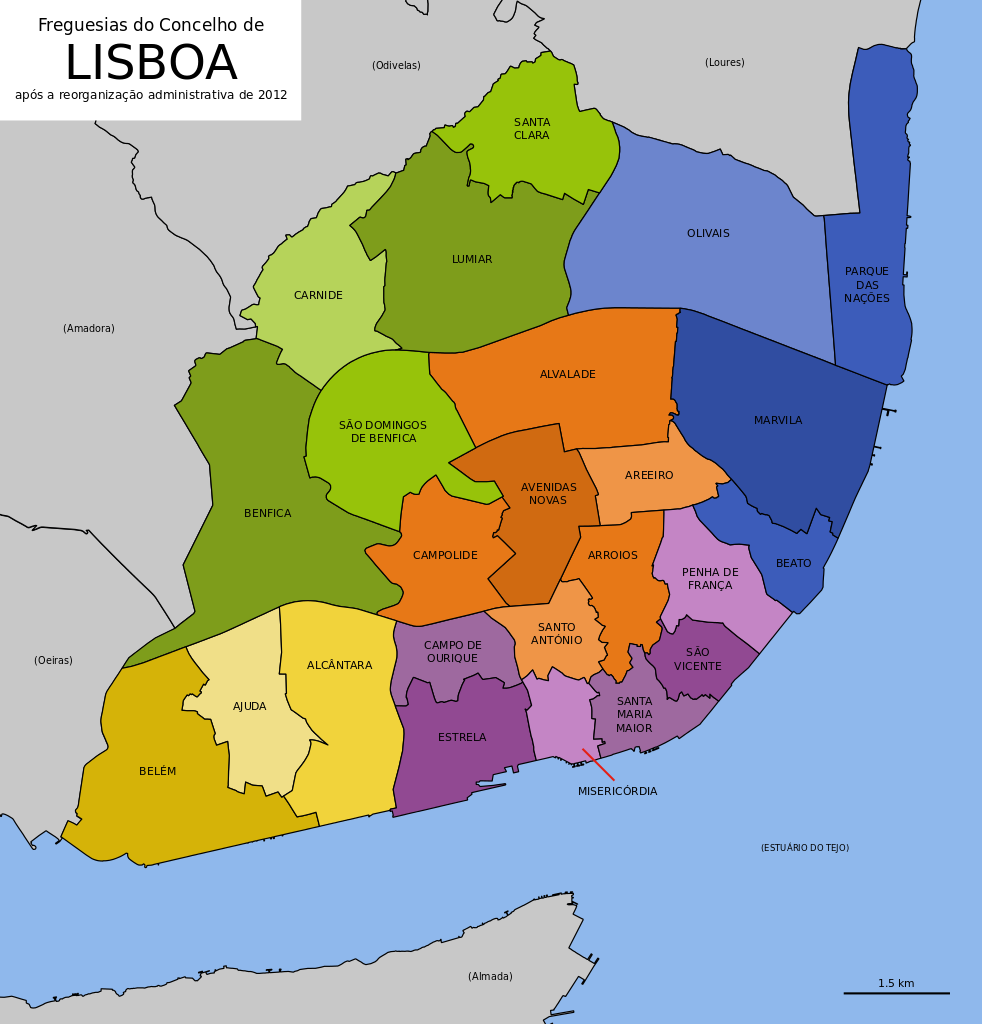
(Wikimedia Commons Own Work by Gazilion CC-0)
Prazeres was a civil parish of Lisbon until 8 December 2012 when the municipality underwent an administrative reorganization incorporating Prazeres into the parish of Estrela. Thus, the name Cimetério de Prazeres (much like the more famous Cimetière de l’Est AKA Père Lachais in Paris), simply provided its location. As I wrote, direct and prosaic.
Walking in circles
I’m sure that generations hence children will look at some of the technology of our age that we might view as remarkable and consider it quaint in much the same we view, say, the horse drawn carriages of our forbears. Dressed as I would be at home, I set out that Thursday morning a stranger in a strange city who spoke only a few words of the national language yet confident that I’d be able to walk nearly three kilometers through a maze of neighborhoods I knew not at all from the hotel to the Cemetery of Pleasures. Whence this bold confidence? Why, the GPS navigation app on my phone of course.
However, as most of us know, there are times when the dream of GPS transforms into a nightmare – or in this instance – a daymare. I’ve always had a problem with the initial steps of GPS directions when it commands the user to proceed in a cardinal or intercardinal direction. I’m an American in Lisbon. If I knew north from west, I might need fewer directions. In this instance my work around was simply to ask the hotel doorman which way I should start.
However, I have two additional major issues (with a third to arise that I’d discover in a subsequent walk). Both might have something to do with the app’s programming though one, I admit, might have been a result of my data speed. As I would learn from Betty when we met in Vienna, these apps are generally programmed to take the shortest rather than the simplest route. Thus, if making a single turn might occasion walking an additional 100 meters, these apps will take you through a maze of lefts and rights to save that short distance. More turns means more opportunity to go wrong. The map looks rather simple in this screen capture from Google Maps:
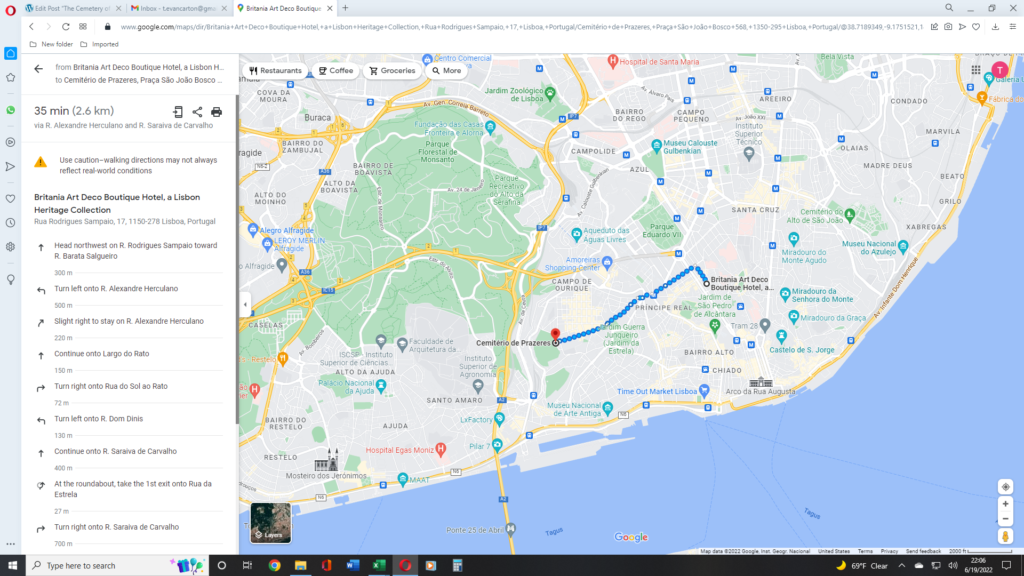
But look at the number of steps necessary. And they continue off the screen!
The second issue is that the GPS was often wrong as to my exact location by between 10 and 25 meters. This is a problem because most European cities – Lisbon included – are more like downtown Manhattan with streets in close proximity and running off at myriad angles than they are like the grid that is midtown Manhattan. So sometimes I’d be directed to turn and there’d be no street. Other times I had already passed the street where it wanted me to turn. In the end, I found the cemetery even if I wandered far more than the 2.6 kilometers the directions showed. (In this aspect, the issue could have been my international data plan which only guarantees 2G speed. I suspect this could have impacted the timing of the app’s ability to pinppoint my precise location.)
An Answer
Regular readers of this blog know that I’m something of a cemetery habitué and people are sometimes curious about the attraction cemeteries hold for me. I think that question came up more on this trip (both in Portugal and when I joined the Earthbound group in Vienna) than on any other. I may have answered this in other posts but I will do so again.
First, you need to know that while I will often visit a cemetery to see the grave of someone I admire it’s not for this reason alone. If my goal was to see as many graves of the famous as possible, I would have certainly gone inside the Monasterio de los Jerónimos yesterday where I would have found the tombs of Vasco da Gama, Alexandre Herculano, and Portugal’s greatest writer, Luis de Camões. For me, there’s so much more reason to visit a cemetery – particularly a great old urban cemetery.
One reason: cemeteries are filled with art. Although the symbolism is often religious (and not particularly meaningful or emotionally moving for me)
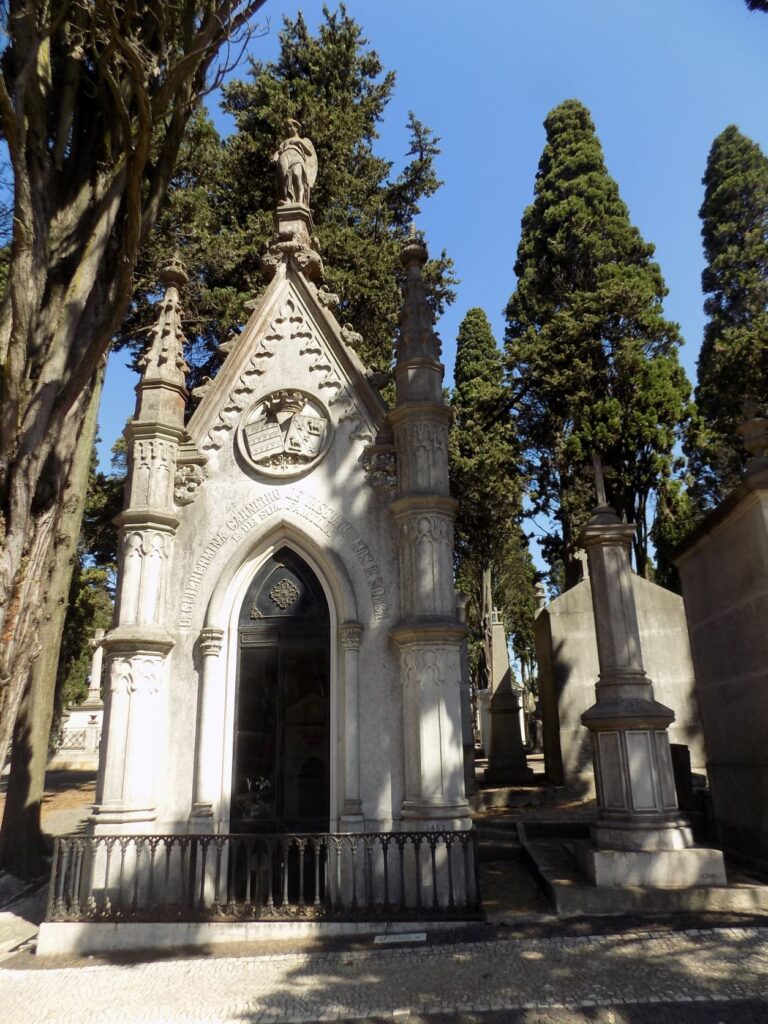
it need not be
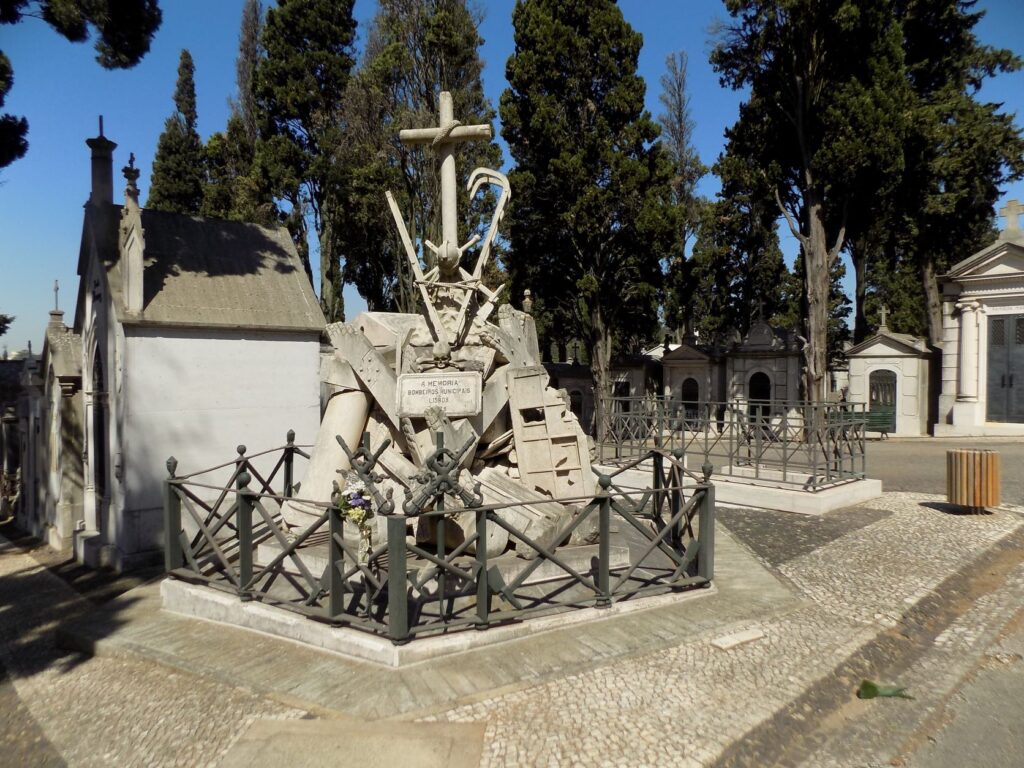
or at least not exclusively so. And there are always new discoveries to make.
Another reason: I think cemeteries speak to egos whether of individuals or families. Consider the American Cemetery at Normandy (or nearly any American military cemetery)
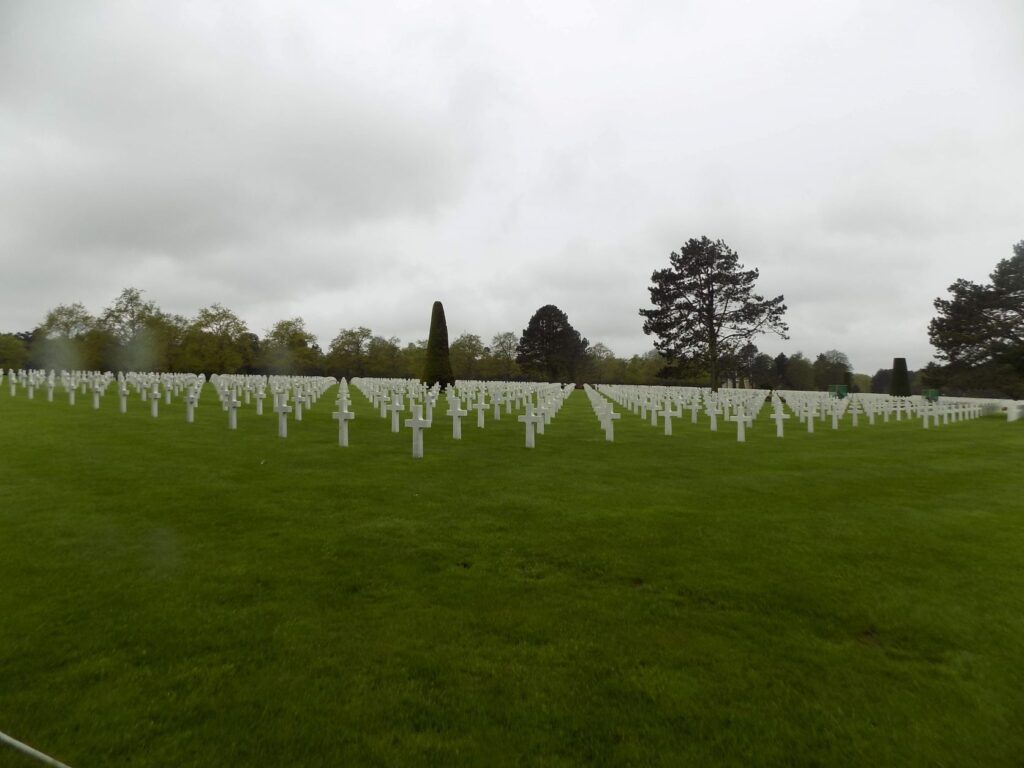
honoring thousands of whom, Lincoln might have said, “…gave the last full measure of devotion — that we here highly resolve that these dead shall not have died in vain…” and contrast this simplicity with that of, say, the Carvalho Monteiro family in Prazeres. Even if they made a similar sacrifice, it’s a contrast worth contemplating.
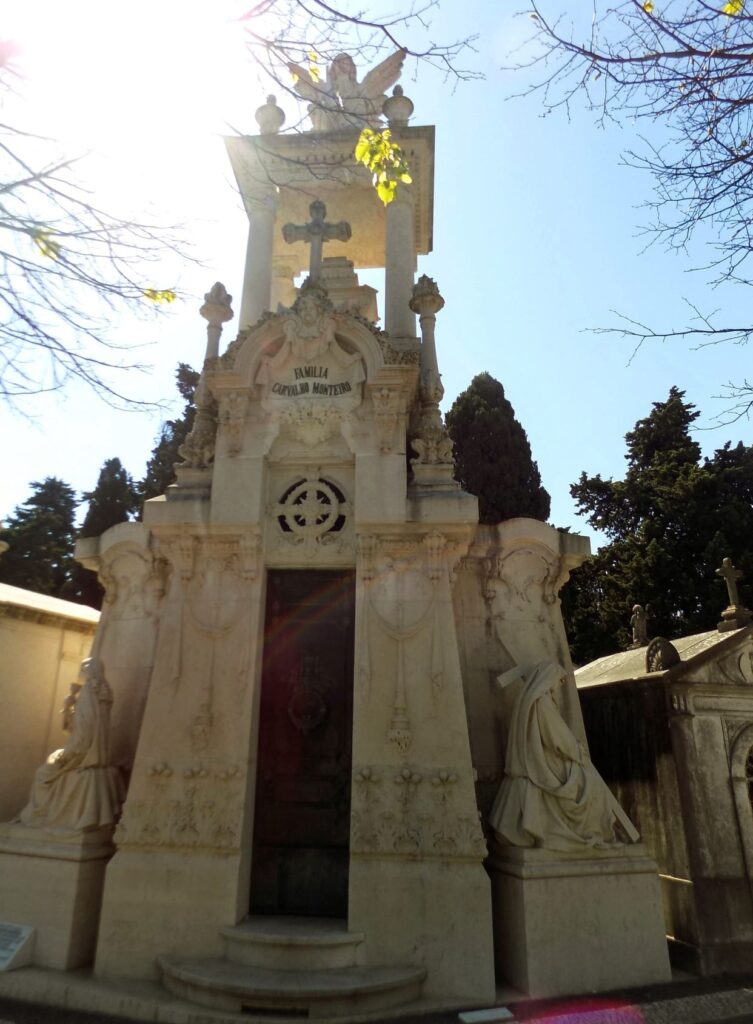
Still another reason: Cemeteries such as Prazeres in Lisbon or any of the others I’ve visited in many ways reflect the values of the culture and society – both past and present – of which they are a part. They can also represent history chiseled in stone. What are the stories of these people? How did past generations treat their dead? Do the living descendants show a similar level of care and respect?
One final reason: Cemeteries usually provide a place for quiet reflection and even a respite from the busyness of sightseeing.
Sadly, the aspect Cimetério de Prazeres lacked was being that quiet space. You see, just outside the limits of the map I reproduced above, about 13km northeast of Prazeres is Humberto Delgado Airport and the cemetery is in the airport’s flight path. Or at least it was the morning of my visit. I paid scant attention to the direction of the flights passing overhead but the persistent roar overwhelmed any space for pondering anything.
Food, glorious food! Part One
I was still in some sense groping my way around Lisbon and had some well spaced areas I wanted to see in the afternoon so, using a combination of public transit and my feet, I set off from the cemetery in the general direction of the hotel because it was reasonably central to everyplace I wanted to go. I walked mostly downhill to the Rato Metro stop about 20 minutes from Prazeres whence I took a combination of yellow and blue trains to Rossio where I could wander through the areas called Rossio and Restauradores that are more or less between the Príncipe Real and Baixa-Chiado. And as I was walking, my stomach began to growl. It was time for lunch.
I’m not certain why I turned onto the small Travessa de Santo Antão – perhaps some outdoor diners caught my eye – 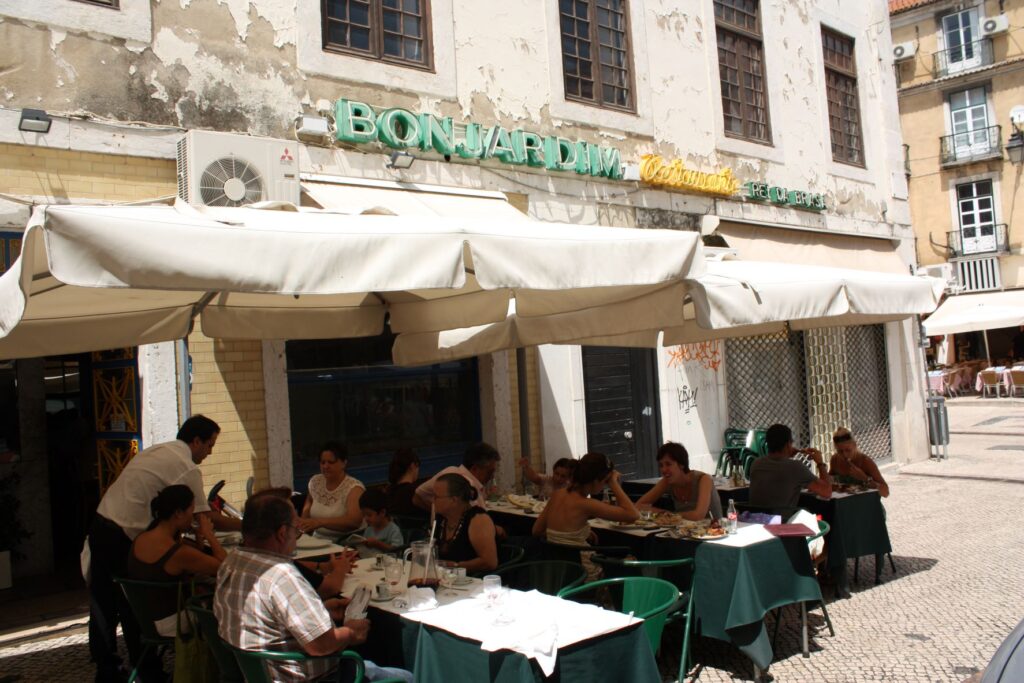
(From faimouioui.com)
but I am ever so happy I did because I found the restaurant Bonjardim which bills itself as “O rei dos frangos” or “The King of Chickens.” Having been disappointed by the piri-piri chicken in Tavira, I was more than happy to give this signature Portuguese dish a second try and I am ever so happy I did even if I went a bit overboard ordering a half chicken, fries, salad and, of course, a Sagres. This was the piri-piri I was waiting to have. Chicken cooked perfectly with a piri-piri sauce that was hot at the front end but didn’t linger so as to obscure the taste of the other dishes.
(Note: I rarely take photos of places I eat or the food that’s prepared since I’m too focused on the eating. Hence, the downloaded picture above.)
While you’re waiting for the next post, here are the rest of my photos from my morning walk and my visit to the Cemetery of Pleasures.